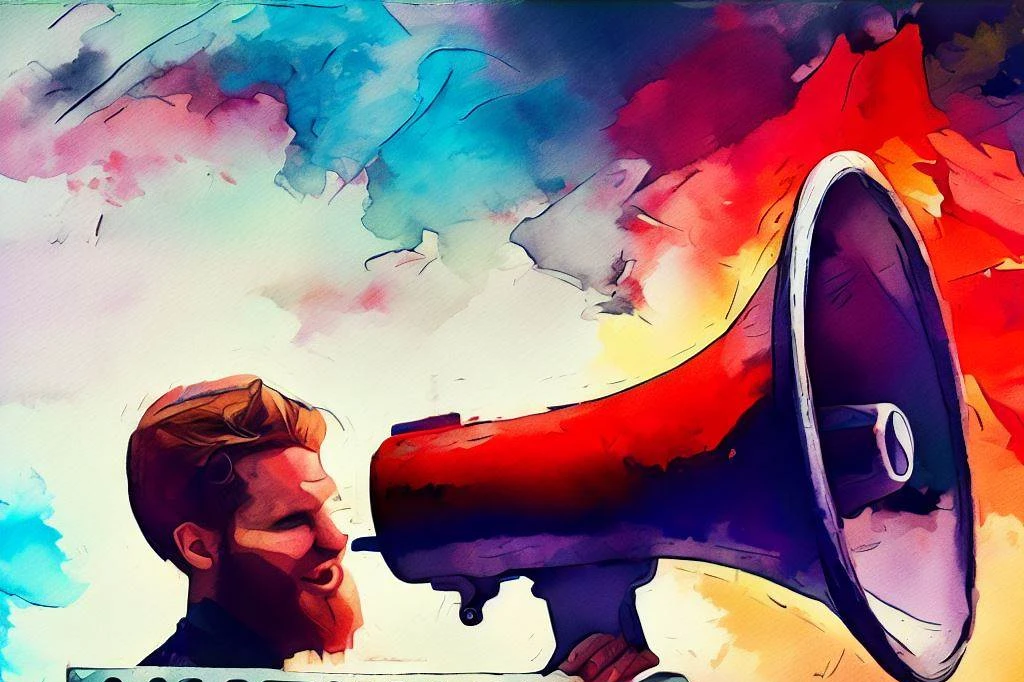How to Start a Graphic Design Business Step By Step

Introduction
Imagine a world where you have the power to turn your creative vision into a thriving business. A place where you can channel your passion for graphic design and transform it into a lucrative career. This is not a far-fetched dream, but a reality that awaits you, if you’re willing to take the plunge.
The ever-evolving graphic design industry presents countless opportunities for aspiring entrepreneurs to carve out a unique space for themselves. However, navigating the complexities of starting your own business can be daunting. That’s where this comprehensive guide comes in, offering a roadmap to help you embark on this exciting journey with confidence.
In this guide, we’ll explore the importance of having a step-by-step plan to build a successful graphic design business. We’ll delve into the process of identifying your niche, building a strong portfolio, and setting up the foundation of your business. Additionally, we’ll discuss pricing strategies, marketing techniques, and ways to attract and retain clients.
So, are you ready to turn your creative passions into a thriving graphic design business? Let’s get started!
Identifying Your Niche and Target Clients

Analyzing the current graphic design market
The graphic design market is vast and continually evolving. To stand out and ensure that your services are in demand, you need to start by analyzing the current market trends, understanding which industries are thriving, and identifying the areas with the highest demand for design services. Keeping an eye on design trends and niche markets will enable you to make informed decisions when selecting your niche and target clients.
Choosing a niche that aligns with your skills and passions
Once you have an understanding of the current graphic design landscape, it’s time to choose a niche that aligns with your skills and passions. This will not only enable you to differentiate yourself from other designers but also ensure that you enjoy the work you do, which is crucial for long-term success.
Some popular niches in graphic design include branding, web design, motion graphics, illustration, and UI/UX design. However, don’t be afraid to explore less common areas where you feel you can make a significant impact. Choosing a niche will help you market your services effectively and attract clients who appreciate your unique expertise.
Make sure to look at Google Trends and Google Keyword Planner for more insight about your niche of choice.
Identifying and understanding your target clients
After selecting a niche, it’s crucial to identify and understand your target clients. These are the individuals, businesses, or organizations that will benefit the most from your services and are willing to pay for them.
Consider the industries you’d like to work with, the size of the businesses you’d prefer to target, and the specific needs and pain points of your potential clients. Understanding your target clients allows you to tailor your marketing efforts and services to meet their needs, resulting in more significant opportunities for a successful graphic design business.
Building a Strong Portfolio

Showcasing your skills and expertise in various graphic design tools
As a graphic designer, your portfolio is your most valuable marketing asset. A well-crafted portfolio will showcase your skills, expertise, and experience in various graphic design tools and techniques. Make sure to include diverse projects that demonstrate your proficiency in design software such as Adobe Creative Suite, Sketch, Figma, or any other industry-standard tools.
Highlighting your technical skills along with examples of finished projects will provide potential clients with a clear understanding of your abilities and the quality of your work. Aim to include examples that demonstrate your versatility in responding to different client requirements and design styles, showcasing your adaptability and creativity within your niche.
Organizing your portfolio to highlight your unique style and talent
Your portfolio should not only demonstrate your skills and expertise but also highlight your unique style and talent. Organizing your portfolio in a way that emphasizes your strengths while providing a coherent narrative of your work will help potential clients easily identify their affinity with your design approach.
When curating your portfolio, focus on quality over quantity, selecting only the best examples of your work that represent your niche and design philosophy. Create logical groupings or categorize your projects according to the type of service offered, such as branding, web design, or illustration. Additionally, ensure that your portfolio is visually appealing, with a clean and user-friendly layout that allows your work to stand out.
Tips for creating an engaging and user-friendly online portfolio
An engaging and user-friendly online portfolio is key to attracting and retaining the interest of potential clients. Keep the following tips in mind when designing your portfolio website:
- Use high-quality images: Make sure your images are high resolution and optimized for web viewing, reflecting the quality of your work.
- Include project descriptions: Provide brief descriptions for each project, outlining the client, goal, and design process, enabling potential clients to understand the context and value of your work.
- Implement easy navigation: Structure your portfolio in a manner that allows for seamless navigation between projects and sections, offering a great user experience.
- Showcase testimonials: Include testimonials from satisfied clients, highlighting your exceptional work and professionalism.
- Provide clear calls-to-action: Encourage potential clients to get in touch by making your contact information easily accessible and using clear calls-to-action.
- Optimize for mobile devices: Make sure your portfolio is responsive and looks great on all devices, as potential clients may view your work from their smartphones or tablets.
- Keep it updated: Regularly update your portfolio with new projects, ensuring it reflects your current skills and style.
By following these tips, you can create a polished and effective online portfolio that captures the attention of your target clients and helps you grow your graphic design business.
Setting Up Your Graphic Design Business

Business registration and legal requirements
Before you start offering your services to clients, it’s crucial to ensure that your graphic design business complies with all legal requirements. The first step is to register your business and decide on the most suitable legal structure, such as a sole proprietorship, partnership, or limited liability company (LLC). Each structure has its pros and cons, so it’s essential to research and consult with a legal advisor if necessary.
Once your business is registered, obtain any necessary licenses or permits, and familiarize yourself with local, state, and federal regulations governing your industry. Additionally, make sure you have adequate insurance coverage, such as general liability or professional indemnity insurance, to protect your business from potential claims or lawsuits.
Opening a business bank account and managing finances
To keep your personal and business finances separate, open a dedicated business bank account. This will make it easier to manage your cash flow, track expenses, and file taxes. It’s also a good idea to consult with a financial advisor or accountant to help you set up a bookkeeping system, develop a budget, and ensure that you’re meeting all tax obligations.
By maintaining accurate financial records and staying on top of your finances, you’ll be better prepared to make informed decisions about your business’s future and ensure its long-term success.
Setting up a productive workspace
Having a dedicated and organized workspace is essential for productivity and maintaining a healthy work-life balance. Whether you’re working from home or renting a studio, create an environment that fosters creativity and minimizes distractions.
Consider investing in ergonomic furniture, such as a comfortable chair and adjustable desk, to promote proper posture and reduce the risk of injury. Ensure that your workspace is well-lit, preferably with natural light, to reduce eye strain and boost your mood. Additionally, organize your supplies, tools, and equipment in a manner that keeps them easily accessible and clutter-free. Check out our guide to setting up a home office for more tips on creating a productive workspace.
Selecting reliable software, tools, and equipment
As a graphic designer, you depend on various software, tools, and equipment to bring your creative ideas to life. Invest in industry-standard design software, such as Adobe Creative Suite, Sketch, or Figma, and keep your software updated to ensure compatibility and access to the latest features.
In addition to software, you’ll need reliable hardware, such as a high-performance computer, a quality graphics tablet, and a color-accurate monitor. Don’t forget about essential peripherals like a mouse, keyboard, and external storage devices for backing up your work.
By equipping your graphic design business with reliable software, tools, and equipment, you’ll be better prepared to deliver high-quality work and meet the demands of your clients.
Pricing Your Services

Evaluating your skills, experience, and value-added services
Determining the right pricing for your graphic design services is crucial for the success of your business. Start by evaluating your skills, experience, and any value-added services you offer to clients. Consider factors such as your level of expertise, the complexity of the projects you undertake, and the specific value you bring to each project.
Keep in mind that as you gain more experience and improve your skills over time, you may need to adjust your pricing accordingly. Don’t undervalue your work, as this can harm your professional reputation and make it difficult to sustain your business in the long term.
Researching competitor pricing and understanding the market rates
When setting your prices, it’s essential to research competitor pricing and understand the market rates for similar services within your niche. This will help you determine a pricing range that is competitive yet reflects the quality of your work and your unique offerings.
Make sure to research the prices of both established designers and freelancers with similar experience and skill sets. This will give you a comprehensive understanding of the market and allow you to set prices that are attractive to your target clients without undervaluing your services.
You can choose to price your services using various methods, such as hourly rates, project-based fees, or value-based pricing. Each method has its pros and cons, so consider which approach best aligns with your business goals and preferences.
By carefully evaluating your skills, experience, and value-added services, and researching competitor pricing and market rates, you can establish a pricing strategy that supports the growth and success of your graphic design business.
Marketing Your Graphic Design Business

Developing a unique and compelling brand
A strong brand is essential for setting your graphic design business apart from the competition and creating a lasting impression on your target clients. Your brand should reflect your unique style, personality, and values, making it easier for clients to connect with you and understand the value of your services.
To develop a unique and compelling brand, start by defining your brand’s core elements, such as your brand story, mission, vision, and values. Next, create a distinctive visual identity that includes a memorable logo, color scheme, typography, and design elements that align with your brand story and niche.
Consistency is key when building your brand. Apply your visual identity across all marketing materials, such as your website, business cards, social media profiles, and promotional materials, to create a cohesive and professional image.
Have An Offline Strategy
While online marketing is essential for attracting new clients, it’s also important to have an offline strategy. Consider attending local networking events, joining industry associations, and participating in design competitions to connect with potential clients and build your professional network. You can also reach out to local businesses and offer your services to help them with their marketing efforts. Organizations like BNI and LeTip are great places to start.
Creating an effective online presence through social media, blog posts, and SEO
An effective online presence is crucial for attracting potential clients and showcasing your work. Start by creating professional and engaging profiles on relevant social media platforms, such as Instagram, Dribbble, LinkedIn, and Pinterest, where you can share your portfolio, design insights, and industry news with your target audience.
In addition to social media, consider starting a blog where you can share valuable content related to your niche, design process, and industry trends. High-quality blog posts not only demonstrate your expertise but also help improve your website’s search engine rankings, making it easier for potential clients to discover your business.
Optimizing your website for search engines (SEO) is another essential aspect of building an effective online presence. Conduct keyword research to identify relevant terms and phrases that your target clients are searching for and incorporate these keywords into your website’s content, meta tags, and headings. This will help improve your website’s visibility in search results and drive more organic traffic to your site.
Building a strong network and leveraging connections within the design community
Networking is crucial for building a successful graphic design business, as it allows you to forge valuable relationships, gain referrals, and stay informed about industry trends and opportunities. Attend design conferences, workshops, and networking events to connect with fellow designers, potential clients, and industry influencers.
In addition to attending events, engage with the design community online by participating in forums, joining relevant social media groups, and collaborating on projects or initiatives. Building a strong network will not only help you attract new clients but also provide you with valuable insights, resources, and support to grow your business.
By developing a unique and compelling brand, creating an effective online presence, and building a strong network within the design community, you can effectively market your graphic design business and attract the clients needed for success.
Attracting and Retaining Clients

Establishing a clear communication and project management process
Clear communication is crucial for the success of any graphic design project. It ensures that you understand your clients’ needs, expectations, and feedback, allowing you to deliver high-quality work that meets their requirements. Establish a communication process that involves regular check-ins and updates, making use of tools such as email, video calls, and project management platforms like Trello or Asana.
In addition to communication, having an effective project management process in place will help you stay organized, meet deadlines, and manage multiple projects simultaneously. Establish a workflow that outlines each stage of the design process, from initial consultation and research to design development, revisions, and final delivery. By implementing a clear communication and project management process, you’ll be better equipped to maintain strong client relationships and deliver exceptional results.
Using client feedback to improve your services and grow your business
Client feedback is invaluable for improving your services and growing your graphic design business. Encourage clients to share their thoughts and suggestions at various stages of the project and upon completion. This feedback will not only help you identify areas for improvement but also highlight your strengths and the value you provide.
Consider using client feedback to refine your design process, expand your skill set, and adapt your services to better meet the needs of your target clients. Don’t be afraid to ask for testimonials and referrals from satisfied clients, as these can be powerful marketing tools that attract new clients and help establish your reputation in the industry.
By actively seeking and using client feedback, you can continually refine your services, enhance your expertise, and grow your graphic design business. Remember that each project is an opportunity to learn and improve, ensuring that you’re consistently delivering the highest quality work to your clients.
Scaling Your Graphic Design Business

Expanding your skills and offering additional design services
As your graphic design business grows, it’s essential to continually expand your skills and explore additional design services that you can offer to your clients. This not only keeps your work fresh and exciting but also opens up new revenue streams and opportunities for growth.
Consider learning new software, tools, and techniques relevant to your niche or branching out into related fields such as animation, video editing, or 3D modeling. By broadening your skill set and offering a wider range of services, you’ll be better equipped to meet the evolving needs of your clients and stay competitive in the ever-changing design industry.
Building a team to manage increased workload and project demands
As your client base expands and your workload increases, you may need to consider building a team to help manage the growing demands of your graphic design business. Hiring talented designers, project managers, and other support staff can alleviate some of the pressure and allow you to focus on your areas of expertise and passion.
When building your team, look for individuals who share your vision, values, and commitment to delivering exceptional work. Creating a collaborative and supportive work environment is crucial for fostering creativity, innovation, and job satisfaction among your employees.
Additionally, be prepared to invest time and resources into training and professional development, ensuring that your team stays up to date with industry trends and best practices. This will help maintain the quality and consistency of your services as your business scales.
Creating a sustainable and profitable business model to support growth
Scaling your graphic design business requires a sustainable and profitable business model that supports your long-term goals and growth objectives. This involves regularly reviewing and adjusting your pricing strategies, diversifying your revenue streams, and optimizing your operational processes to maximize efficiency and profitability.
Look for ways to automate routine tasks, such as invoicing, project management, and client communication, using tools and software designed for this purpose. This will free up more time for you to focus on creative work and strategic planning for your business’s future.
Also, consider seeking advice from experienced professionals, such as business coaches, financial advisors, or industry mentors, who can provide valuable insights and guidance on scaling your graphic design business successfully.
By expanding your skills, building a team, and creating a sustainable and profitable business model, you’ll be well-equipped to scale your graphic design business and achieve long-term success in the industry.
Conclusion
In this comprehensive guide on how to start a Graphic Design business step by step, we’ve explored the essential steps you need to take to launch a successful design venture. From identifying your niche and target clients to building a strong portfolio, setting up your business, pricing your services, marketing your brand, attracting and retaining clients, and scaling your business, each step is crucial in establishing a solid foundation for your graphic design enterprise.
As you embark on this exciting journey, remember that starting a business requires dedication, hard work, and a willingness to learn and adapt. Embrace the challenges and celebrate the milestones as you grow and develop your skills as both a designer and an entrepreneur.
With the right mindset, a strategic approach, and a passion for your craft, you have the potential to create a thriving graphic design business that not only showcases your unique talents but also allows you to make a meaningful impact in the world of design. Keep pushing forward, stay curious, and never stop learning. You’ve got this!
